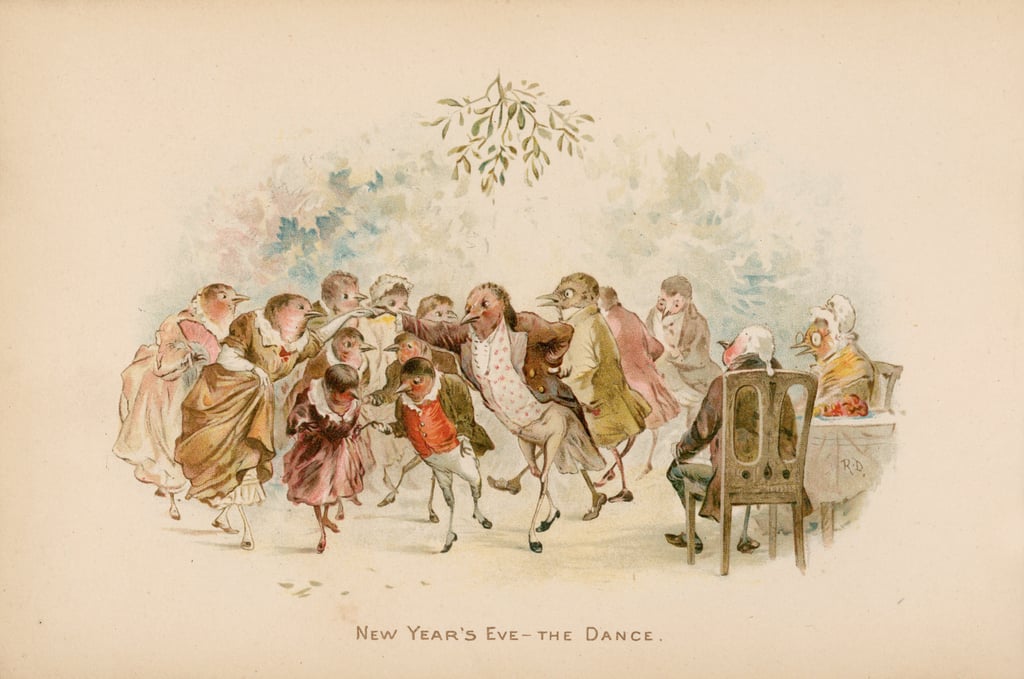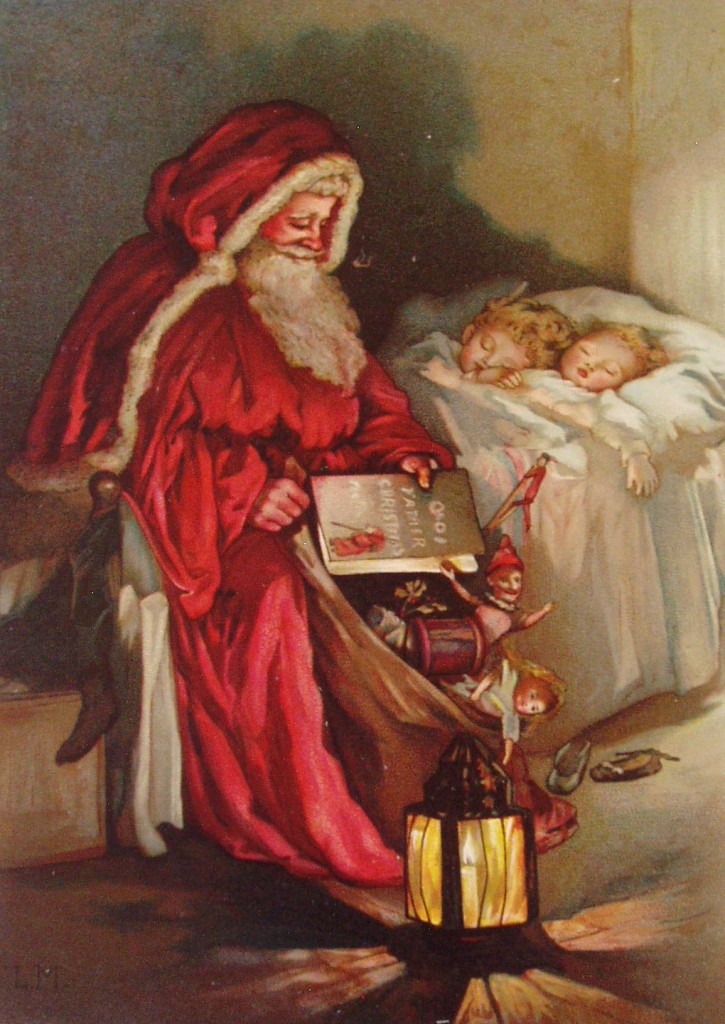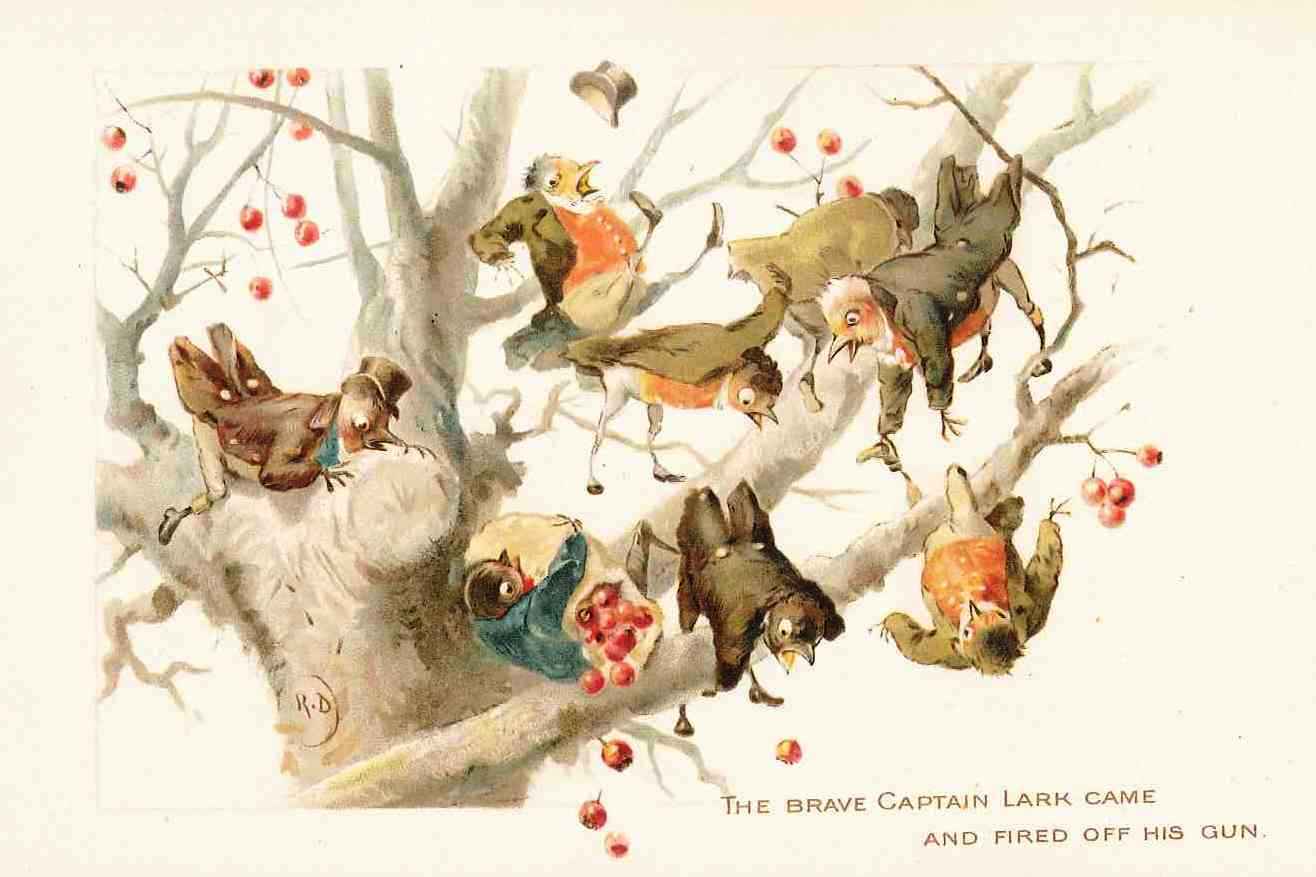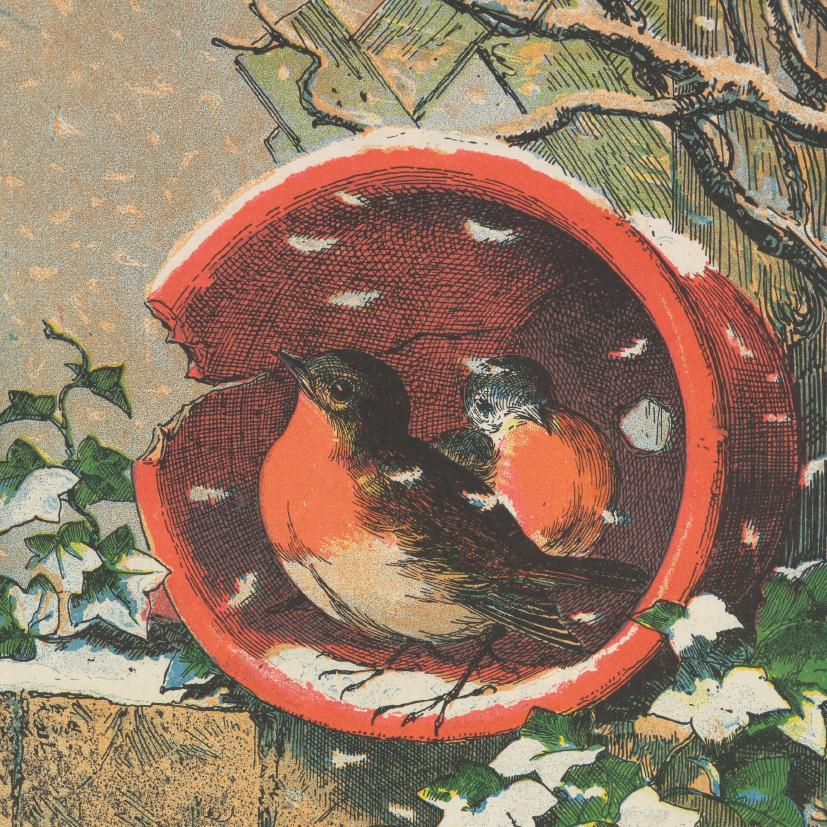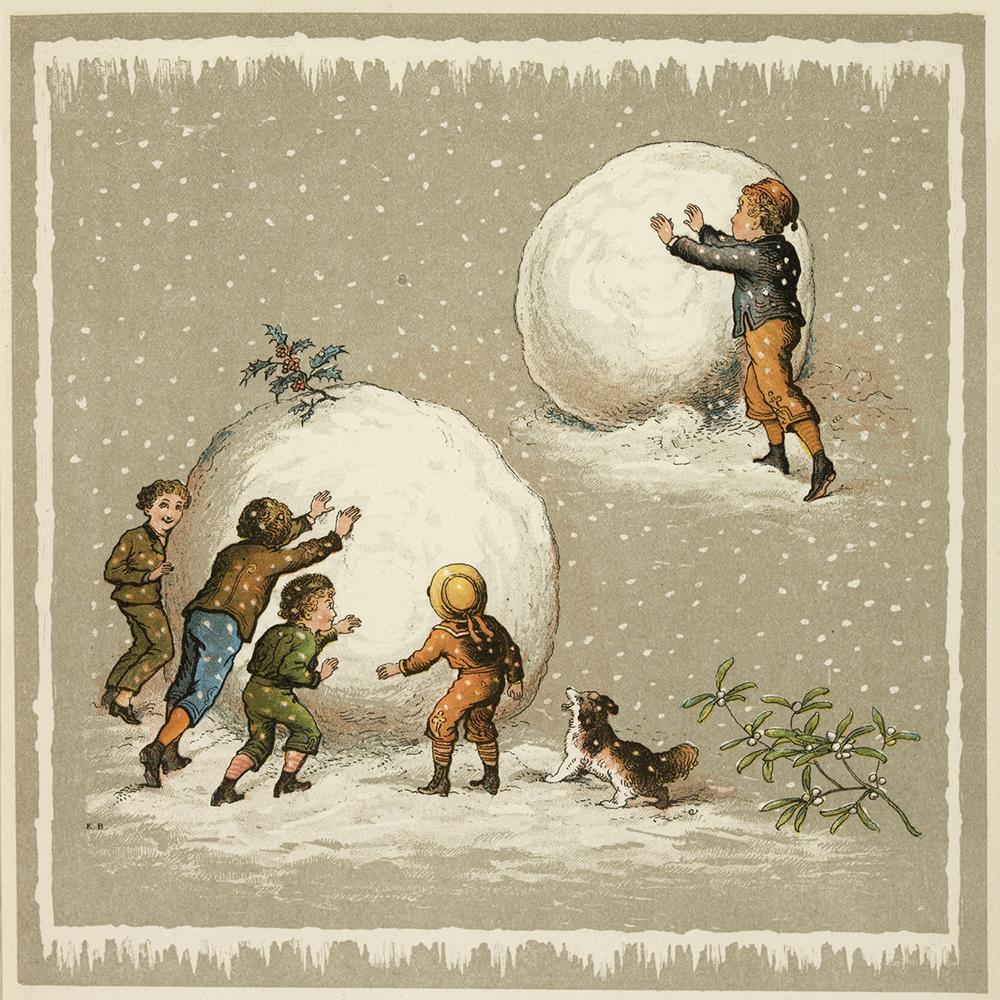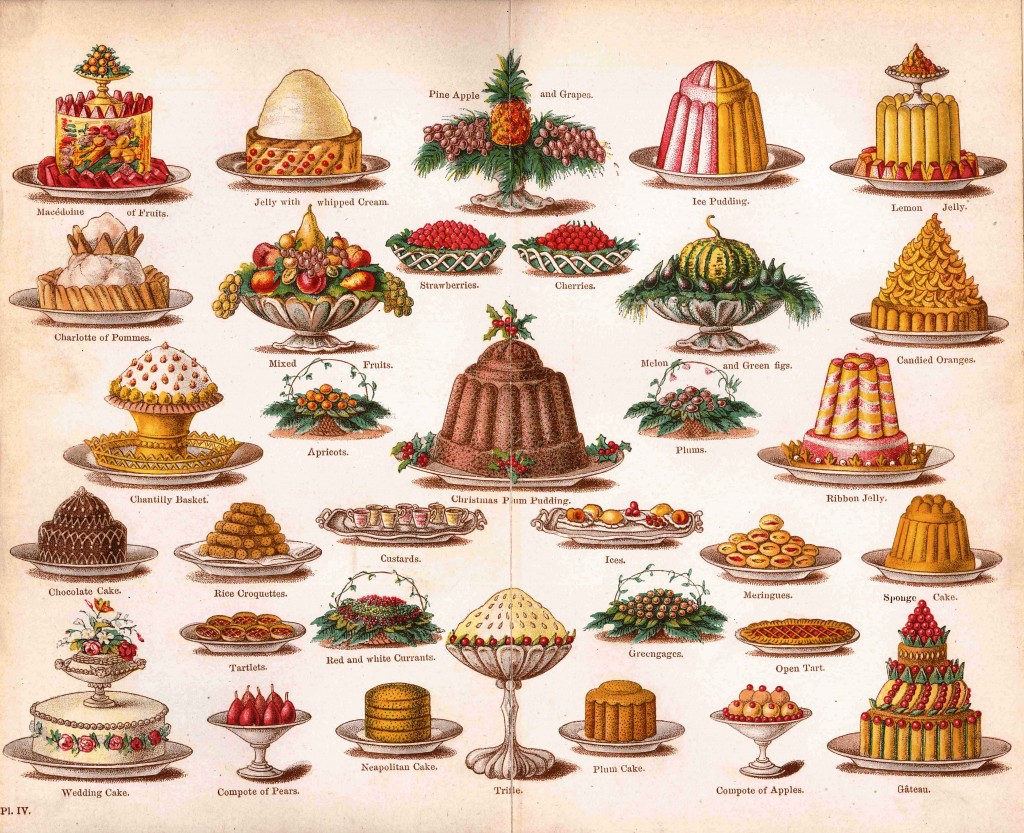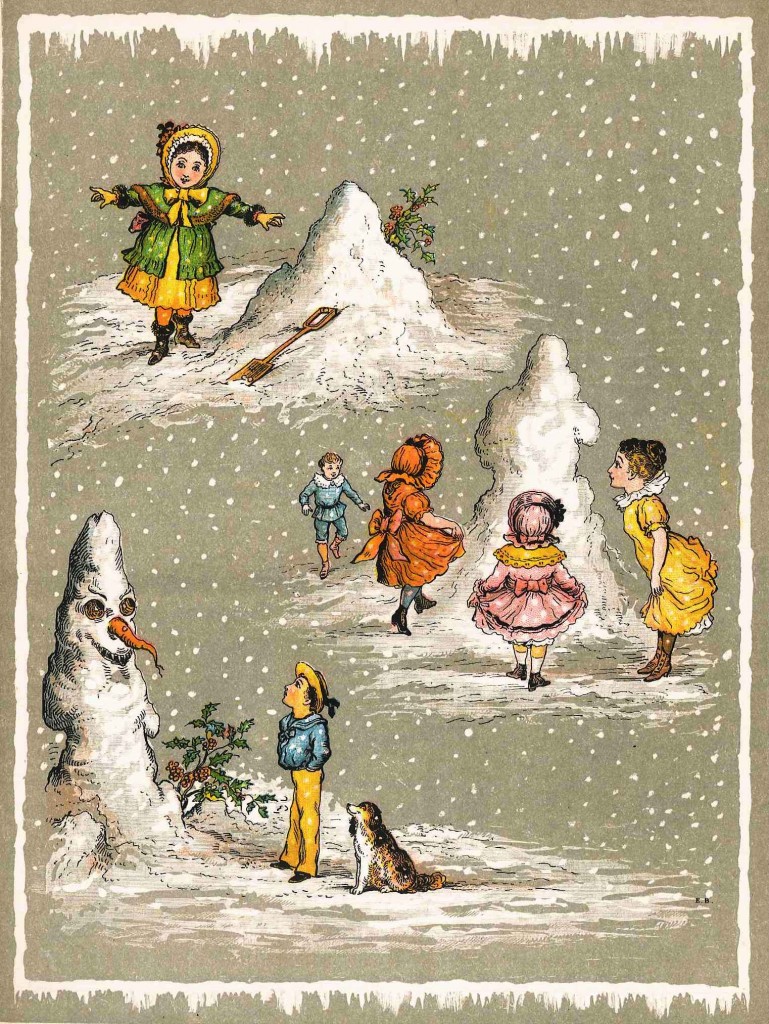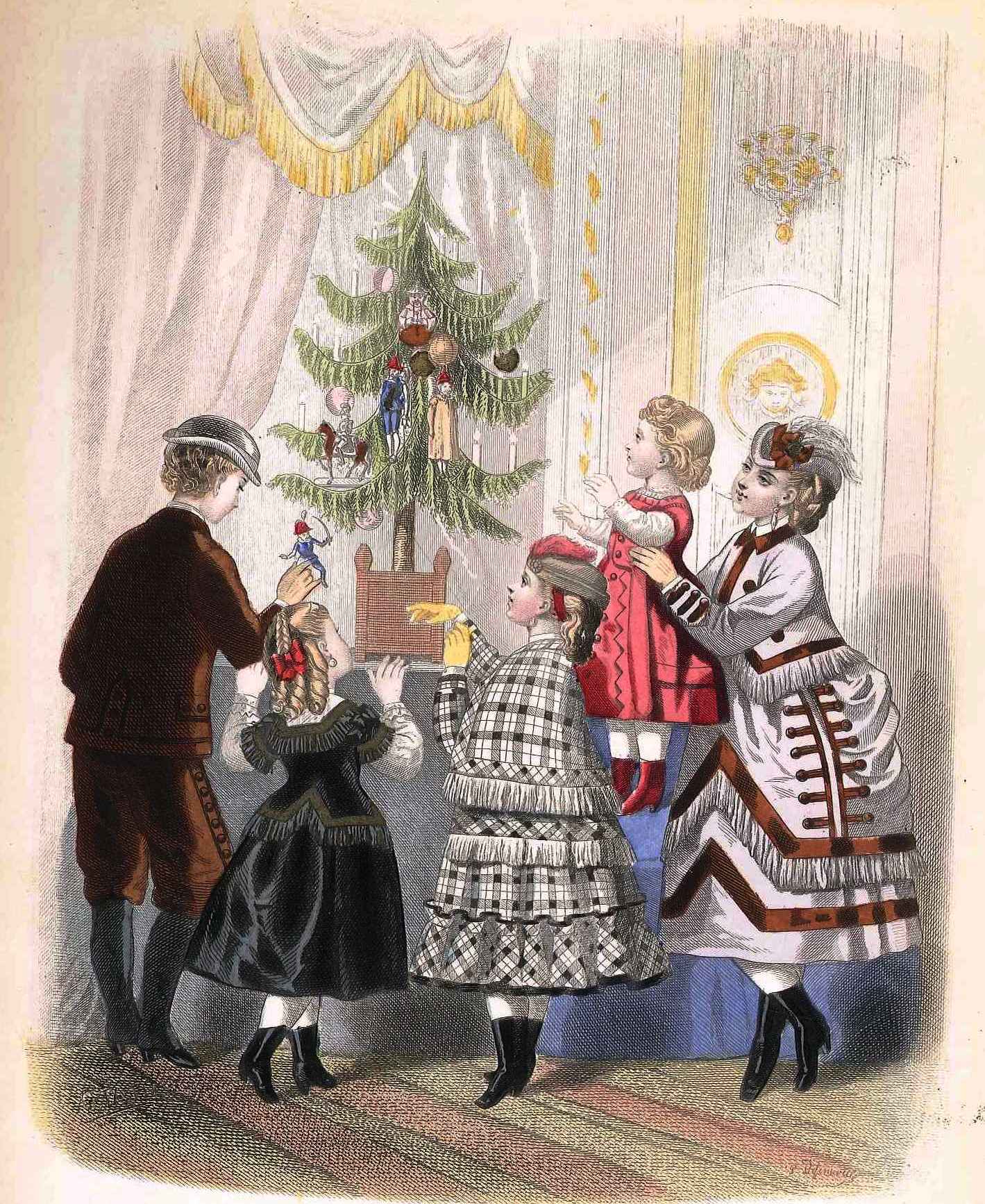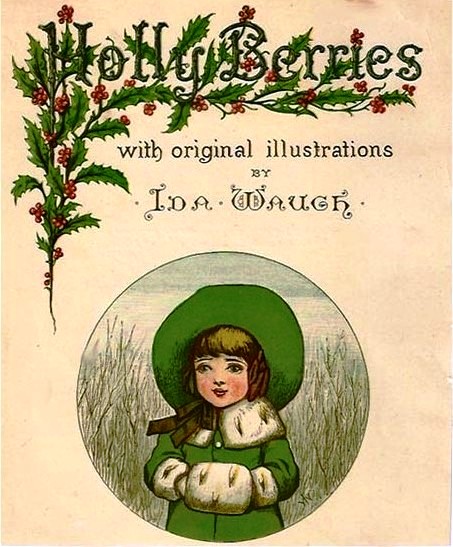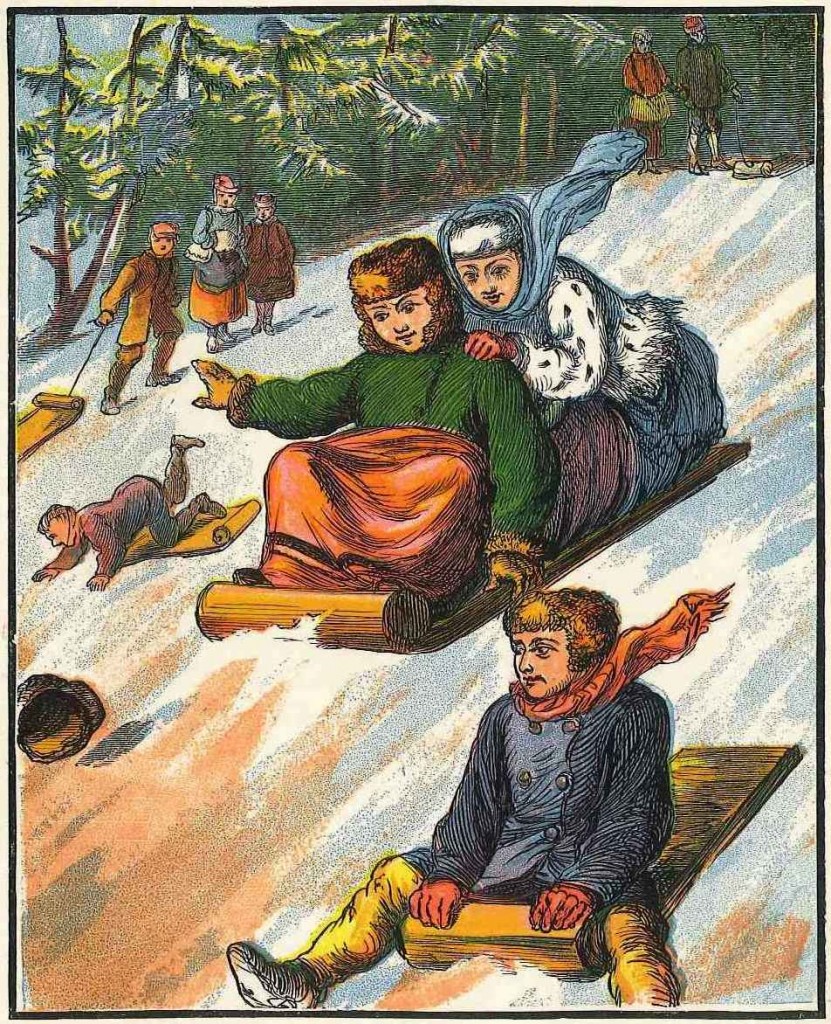We close the year with a final flourish from the Twigs, with this delightful illustration by Robert Dudley of their New Year’s Eve dance at Ruddock Hall. Ruddock Manor is fuller than ever, I think, There is Goldfinch the banker and little Lord Spink, Tom Titter is here, and Sir Twitterty Tweet And that gay…
Category: Featured
Twenty Fourth Day of Advent – Christmas Eve
Now wake little people dressed in white, Old Father Christmas came last night; He crammed your stocking – and, children, look! He brought you a coloured picture book. from Old Father Christmas by Lizzie Mack and Robert Ellice Mack, published in London by Ernest Nister, 1889. I have been looking forward to posting this picture…
Twenty Third Day of Advent
This illustration is from The Twigs, or, Christmas at Ruddock Hall illustrated by Robert Dudley, published in London by Castell Brothers, 1890. Yesterday we mused on why robins are associated with Christmas, which led to the discovery that Victorian postmen were nicknamed Robins. But why is the nation’s favourite bird called a robin in the…
Twenty Second Day of Advent
Some flowerpot robins from The Bright Surprise for Little Eyes, published in London by the Sunday School Union, 1884. We are so used to associating robins with Christmas that I doubt we ever give much thought as to why this is. As with all such questions there are many answers. However, one thing we…
Twenty First Day of Advent
from Oh Dear Oh Look at the Snow by Jack Frost, published by Dean & Son, 1884. I know we’ve posted a couple of snow scenes from this book by the pseudonymous Jack Frost, depicting children making huge snowballs, but I love this one and can’t bear to leave it out. Why do I love…
Twentieth Day of Advent
Engaging servants – This important business is usually thought a pleasing excitement by one class of mistresses, who are constantly changing, and who do not know how to appreciate a good servant; or a dreadful trouble and worry by those who are idle or careless.” From Beeton’s Every-day Cookery and Housekeeping Book by Mrs Beeton,…
Nineteenth Day of Advent
Such a wonderful battle you never did see, As the battle between little Willie and me. It was perfectly harmless, I wish you to know, The balls were all made of the softest of snow! From ‘Oh Dear Oh Look at the Snow’ by Jack Frost, published by Dean & Son,1884.
Eighteenth Day of Advent
What a surprise! Dazzling streams of light! Fancy a fine tree with a hundred blue, red, white and green candles, and its branches loaded with all manner of fine things! From ‘The Children’s International Christmas Album’ by the Countess D’Elff, published in London by Asher & Co., 1870. What remarkably dainty feet this family has!…
Seventeenth Day of Advent
Let bright holly shine and glow In winter-time of frost and snow; Let the smooth green leaves entwine Around our house at Christmas time. from Holly Berries: with original illustrations by Ida Waugh published in London by Griffith & Farran, 1883. Here is Ida Waugh again, the American illustrator already discussed in our Ninth Day…
Sixteenth Day of Advent
In Canada, North America, and some parts of Russia where the winters are longer and much more severe than in this country, the children amuse themselves by sledging. from The Seasons – Winter, by A.S., in The Bright Surprise for Little Eyes, published in London by the Sunday School Union, 1884. This picture is from…
